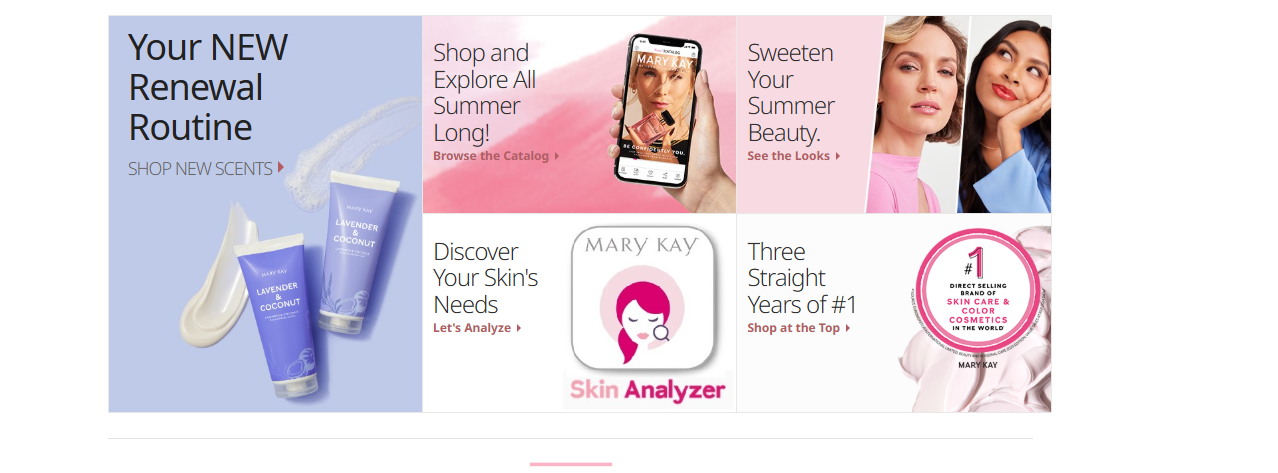Mary Kay Review 2025: The Brutally Honest Truth About the Iconic Pink Empire
Welcome to the Mary Kay review! When you hear the name Mary Kay, images of pink Cadillacs, beauty events, and confident consultants might come to mind. But behind the branding lies a company that has built a global presence over the past 60+ years.
Founded in 1963, Mary Kay has grown into one of the world’s most recognizable direct selling businesses. It promises more than makeup — it offers entrepreneurship, empowerment, and financial freedom (at least in theory).
But in 2025, with online beauty stores and influencer-driven brands taking over, you might be asking:
Is Mary Kay still relevant?
And more importantly: Is it worth joining?
In this review, we’ll break down:
- What Mary Kay really offers
- How the business model works
- The pros and cons of becoming a consultant
- And whether it’s a smart opportunity — or just marketing wrapped in lipstick 💼
Let’s dig in.
-
Company Overview: Who’s Behind Mary Kay? 👩💼
Mary Kay was founded in 1963 by Mary Kay Ash, a bold and visionary woman who wanted to create a business that empowered other women — something that was rare at the time. With just $5,000 and a dream, she launched what would become one of the most iconic direct selling companies in history.
From the beginning, Mary Kay’s philosophy was simple:
“God first, family second, career third.”
This motto still guides the company’s culture today, emphasizing balance and purpose over pure profit.
🌟 Key Facts:
- Founded: 1963, Dallas, Texas
- Founder: Mary Kay Ash
- Global Presence: Operates in over 35 countries
- Consultants: Estimated 3+ million worldwide
- Products: Skincare, makeup, fragrances, and more
Mary Kay isn’t just about cosmetics — it’s about community, recognition, and opportunity. From extravagant seminars to those famous pink Cadillacs, the company has built a brand that blends prestige with personal development.
But while the message is empowering, some critics argue that the “business opportunity” might not be as rosy as it seems. Before jumping in, it’s worth understanding not just who’s behind the brand — but how the business model actually functions.

-
Mary Kay’s Product Line: What Are You Really Selling? 💅🧴
Mary Kay isn’t just a business opportunity — it’s first and foremost a beauty brand. Whether you’re thinking of joining as a consultant or just want to know what the hype is about, it’s important to understand what products you’ll actually be promoting.
And here’s the truth:
Mary Kay’s product line is surprisingly broad. From everyday skincare to full-glam makeup, it covers a wide range of beauty needs. But how good are the products really?
🧴 Main Product Categories
- Skincare – cleansers, serums, anti-aging creams, acne treatments
- Makeup – foundations, lipsticks, mascaras, eyeshadows
- Fragrance – perfumes and body sprays
- Men’s line – shaving creams, colognes, facial products
- Body care – lotions, scrubs, sunscreens
💄 Top-Selling Products (Fan Favorites)
- TimeWise 3D® Age Minimize Day Cream
- Oil-Free Eye Makeup Remover
- Satin Hands® Set
- Unlimited Lip Gloss
- Lash Love® Mascara
These products are often praised for their quality — especially skincare — but some customers feel they’re a bit overpriced compared to drugstore alternatives. That said, loyal users swear by them, and some formulations are genuinely high-performing.
❓Are They Worth the Price?
That depends. While Mary Kay isn’t a luxury brand, it’s not exactly budget-friendly either. You’re paying for:
- Quality ingredients (sometimes)
- Packaging and branding
- Supporting a personal seller (not a faceless store)
Some products offer real value — others may be overpriced due to the MLM structure. It’s a mixed bag 🎭.
So, before you decide to sell, ask yourself:
👉 Would you buy these products without the business attached?
Because if you wouldn’t — your customers probably won’t either.
-
How the Business Model Works 📊💼
At its core, Mary Kay operates as an MLM (multi-level marketing) company — although they prefer to call it direct sales. Either way, if you’re thinking about joining, you need to understand how the money actually flows.
Is it about selling products? Recruiting others? Or both?
Let’s break it down.
💵 How Do You Make Money in Mary Kay?
There are two main income streams:
- Retail Profit (Selling Products)
You purchase products at a discounted price (typically 50% off) and resell them at full price to customers.
Example: Buy a lipstick for $9, sell it for $18 — keep the $9 profit. - Team Commissions (Recruiting)
When you recruit others and they begin selling, you earn commissions based on their sales volume. Build a larger team, and you unlock higher bonuses, leadership titles, and even cars.
🧾 Starter Kit & Costs
To get started, you’ll need to purchase a starter kit, which usually costs around $30–$130, depending on your country and current promos.
This includes:
- Sample products
- Business tools (brochures, order forms, etc.)
- Access to the Mary Kay online portal
But keep in mind:
➡️ You may be encouraged to purchase inventory to have products on hand — often called a “qualified order.” This can cost hundreds to thousands depending on your upline’s advice.
🎯 What About Bonuses, Prizes, and the Pink Cadillac?
Yes, they’re real.
Mary Kay famously rewards top sellers and recruiters with:
- Cash bonuses
- Free trips
- Jewelry and gifts
- And of course… the iconic pink Cadillac 🚗💕
But these rewards aren’t typical. They require consistently high team sales, large personal volume, and dedication. Only a small % of consultants qualify.
⚠️ The Catch: Inventory Loading & Pressure
Many consultants report being pressured to “invest” in inventory upfront — even without confirmed customers. This can lead to:
- Unsold products piling up 📦
- Financial stress
- The feeling that you’re your own biggest customer
And while team-building bonuses sound great, they only kick in once your team is active and performing. If not, you’re stuck on sales alone.
📉 Can You Actually Make a Profit?
Yes — some do, especially those with sales skills, big networks, or years of experience.
But for most? The earnings are modest at best, and some even lose money due to product purchases and business expenses.

-
Pros of Joining Mary Kay ✅
Joining Mary Kay isn’t all risk and sales pressure — there are some genuine benefits to becoming a consultant, especially if you enjoy beauty, personal development, and flexible work.
Let’s explore what actually makes people say yes to Mary Kay:
💄 1. Strong, Trusted Brand
Mary Kay is a globally recognized name with a long-standing reputation. This gives you credibility right from the start — you’re not trying to explain a totally unknown product.
👭 2. Empowering Community
One of Mary Kay’s biggest selling points is its supportive environment. Many consultants love the sisterhood, team spirit, and mentorship they receive.
You’re not just joining a business — you’re joining a tribe.
🕒 3. Flexibility & Freedom
Work when you want, where you want. Whether it’s a side hustle or full-time gig, you set your schedule. This makes it ideal for moms, students, or anyone seeking extra income without a 9–5.
🎁 4. Recognition and Rewards
From jewelry and cash bonuses to exclusive trips and the iconic pink Cadillac, Mary Kay goes big on recognition.
If you’re motivated by incentives and public praise, this system might really speak to you.
📚 5. Training and Personal Growth
Mary Kay offers solid training resources, seminars, online tools, and leadership development. Even if you don’t stay long-term, you can gain valuable sales, networking, and presentation skills.
💬 “It’s more than makeup… it’s about confidence and growth.”
Many consultants say that even if they didn’t get rich, they became more confident, outgoing, and capable. For some, that alone made it worth it.
Of course, there are two sides to every lipstick.

-
Cons of Joining Mary Kay
While Mary Kay promotes dreams of financial freedom and flexible income, the reality isn’t always so rosy. For many consultants, the experience turns out to be harder, riskier, and far less profitable than expected.
Let’s take a closer look at the downsides.
💸 1. Pressure to Buy Inventory
Although Mary Kay says you don’t need to buy stock, many uplines heavily encourage consultants to place large orders to “qualify” or look professional.
This can lead to:
- 💰 Hundreds (or thousands) spent upfront
- 📦 Products sitting unsold in your closet
- 😓 Financial stress, especially if you don’t make quick sales
🧍♀️ 2. You’re Mostly on Your Own
Yes, there’s training and team chats — but at the end of the day, you are responsible for your success.
No guaranteed paycheck. No leads handed to you. Just your effort and your hustle.
👥 3. Recruiting Is Often the Only Real Path to Profit
While selling products earns retail profit, real money usually comes from building a team.
This means:
- Convincing others to join
- Managing downlines
- Repeating the cycle — which starts to look very pyramid-like 🔺
📉 4. Most Consultants Don’t Earn Much
According to income disclosure statements (when available), a majority of Mary Kay consultants earn little to nothing — and some even go into debt.
In fact, many never recoup their initial investment.
🗣️ 5. Strained Relationships
Selling to friends and family can get awkward fast.
Repeated product pitches or invitations to join your team can hurt personal relationships, especially if loved ones feel pressured.
⚖️ 6. Ethical Concerns
Some critics argue Mary Kay walks a fine line between direct sales and a pyramid scheme.
The focus on recruitment, “inventory loading,” and constant purchasing creates a model where only the top few succeed — and the rest fund the system.
🧠 Reality Check:
Mary Kay can work — but not for everyone, and not without risk. If you’re not comfortable with sales, recruitment, or uncertainty, this may not be the opportunity you’re looking for.
-
Real User Testimonials 💬 – What People Are Really Saying
To truly understand Mary Kay, you need to go beyond brochures and bonus charts. The best insight comes from those who’ve lived it — the consultants, customers, and even critics who’ve shared their stories online.
Here’s a look at what people are actually saying about Mary Kay — the good, the bad, and the brutally honest.
🌟 Positive Experience: “I Finally Felt Empowered”
Source: KalynBrooke.com
“My mentor and director were absolutely amazing! I finally felt confident and part of a sisterhood. The environment was uplifting, and the team genuinely cared about my success.”
Kalyn tried Mary Kay for 9 days and documented her journey, emphasizing the supportive atmosphere and strong training culture.
🔗 Read full story
💔 Negative Experience: “I Was Left With Debt and Lipstick”
Source: The Cut – New York Magazine
“I had to spend $1,800 on inventory just to be taken seriously. I never sold most of it. After years of trying, I ended up with debt and shame.”
Monique, a former consultant, lost over $70,000 over several years through inventory loading and training event costs.
🔗 Read full article
💄 Mixed Feelings: “I Love the Products, But the Business Was Tough”
Source: Reddit /r/30PlusSkinCare
“I’ve used Mary Kay products for 11 years. I love how they make my skin look and feel. But I tried selling them once, and it wasn’t for me. Great skincare, not a great income stream.”
This Reddit user reflects the common view that while product quality is solid, the business model can be challenging.
🔗 Read on Reddit
🚗 “I Earned the Car… But at What Cost?”
Source: Reddit /r/antiMLM
“Yes, I earned the pink Cadillac. But I sacrificed so much — time, energy, relationships. It’s not a ‘free’ reward. It takes years of nonstop hustle.”
Consultants on anti-MLM forums often admit they reached success, but at a high personal price.
🔗 View thread
📊 What Can We Learn from These Reviews?
| 👍 Positives | 👎 Negatives |
| Supportive team environment | Pressure to buy large inventory |
| Personal growth and confidence | Risk of financial loss |
| Quality skincare products | Difficult to earn sustainable income |
| Recognition & rewards | Emotional burnout and recruiting pressure |
🧠 Final Thought:
Mary Kay can be empowering — but only if you’re fully aware of what you’re stepping into. The testimonials show that:
- The community and training can be uplifting
- The products are well-liked by many
- But the business model carries real risk, especially for those pressured into large purchases or recruitment targets
-
Is Mary Kay a Scam or Legit? 🤔💼
When people hear “MLM,” many immediately think of pyramid schemes, aggressive sales tactics, and false promises. So it’s only fair to ask:
👉 Is Mary Kay a scam? Or is it a legitimate way to earn money?
Let’s break it down based on facts — not just opinions.
✅ Why Mary Kay Is Considered Legit
- Real products, real customers
Mary Kay sells tangible skincare, makeup, and fragrance products — not just memberships or “positions.” This is a key difference from illegal pyramid schemes. - Voluntary product purchases
Officially, consultants don’t have to buy inventory in large quantities. Customers can order directly through your Mary Kay website, reducing the need for personal stock. - Long track record
The company has existed since 1963 and operates in over 35 countries. That kind of longevity would be nearly impossible for an outright scam. - FTC compliance
Mary Kay has not been shut down or penalized by the U.S. Federal Trade Commission (FTC), which actively investigates fraudulent MLMs.
⚠️ But There Are Red Flags to Consider
- Heavy recruitment culture
While selling products earns some profit, most real money comes from building a team — a hallmark of MLM structure. This creates a system where only the top ranks earn well. - Inventory loading
Despite corporate disclaimers, many consultants report being pressured by uplines to buy thousands of dollars in products to “qualify” for rewards or promotions.
🔗 See source: The Cut – How One Woman Lost $70,000 in Mary Kay - Income inequality
Most consultants earn very little — or even lose money. According to studies, less than 1% of MLM participants make a sustainable full-time income. - Blurred ethical lines
Some ex-consultants say they were misled about costs, income potential, and the amount of effort needed to succeed. This raises ethical concerns, even if the business is technically legal.
🧠 So… Is It a Scam?
Legally? No.
Ethically? It depends.
Mary Kay is a legitimate business model, but one that carries significant risks — especially for those who aren’t naturally skilled at sales or recruiting.
It’s not a get-rich-quick scheme, and it’s not for everyone. Think of it more like a commission-based sales job with startup costs — but with fewer guarantees and more responsibility.
🔍 Final Word:
- If you’re passionate about the products, confident in your ability to sell, and willing to invest time and effort — it can work.
- But if you’re expecting passive income or fast money, you’ll likely be disappointed.
-
Who Is Mary Kay Best Suited For? 👩💼🎯
Let’s face it — Mary Kay isn’t a one-size-fits-all opportunity.
Some people thrive in its structure. Others walk away frustrated and burned out. The key to success often comes down to personality, goals, and expectations.
So… who actually does well in Mary Kay?
✅ Mary Kay May Be a Good Fit If You:
- 💬 Love talking to people and enjoy building relationships
- 💄 Are genuinely passionate about skincare, beauty, and helping others feel confident
- ⏰ Can commit time consistently — this isn’t instant income
- 💪 Have a strong work ethic and don’t need constant external motivation
- 🧠 Understand sales and are okay with rejection
- 👩🏫 Want to learn new skills in marketing, communication, and leadership
- 📱 Are comfortable promoting on social media, hosting events, or networking
❌ It’s Probably Not for You If You:
- 😓 Feel uncomfortable selling to friends or family
- 🏦 Can’t afford to lose money on inventory or slow months
- 😠 Expect quick results or passive income
- 🙅♀️ Dislike recruitment or leading a team
- 📉 Don’t want to manage your own business, expenses, and goals
- 🧾 Prefer stable income over commissions
💡 Real Talk:
Mary Kay is a sales job wrapped in pink packaging.
If you’re okay with that — and excited by it — you might thrive.
If not, it’s better to walk away now than dive in based on hype alone.
-
Final Verdict: Should You Join Mary Kay in 2025? 🧐💬
So, after peeling back the glossy branding, the glittery rewards, and the pink Cadillacs… what’s the real deal with Mary Kay?
Is it a legit opportunity — or just another beautiful illusion?
The truth lies somewhere in the middle.
✅ Why You Might Join
Mary Kay offers:
- A strong global brand and trusted products
- A tight-knit, supportive community of women
- Flexibility and personal growth opportunities
- Recognition and incentive-driven motivation
For those who love beauty, enjoy networking, and want to build a small business on their terms — it can work.
❌ Why You Might Walk Away
But… it’s not for everyone.
Mary Kay also comes with:
- Startup costs and ongoing financial risk
- Sales pressure and possible inventory overload
- A steep learning curve with no guaranteed income
- Emotional stress, especially when friends and family say “no”
📊 Bottom Line:
Mary Kay is not a scam, but it is a high-effort, high-responsibility sales business.
Success depends on you — not luck, not your upline, and certainly not magic.
If you’re looking for quick money or passive income, look elsewhere.
But if you love the product line, have thick skin, and thrive on hustle, this may be your lane.
🚦My Honest Recommendation:
Try the products first.
If you genuinely love them and see yourself naturally sharing them — consider giving the business side a shot.
Start small. Set limits. Don’t overinvest. And always keep your eyes open.
👉 What’s Next?
If you’re ready to explore Mary Kay further, check out the official website or connect with a local consultant you trust.
And if you found this review helpful, feel free to share it with someone who’s thinking about joining too 💬
💡 Bonus: Looking for a Better Alternative? Try LiveGood 🚀🌿
If you’ve read this far and feel like Mary Kay might not be the right fit, you’re not alone — and you still have options.
Let me introduce you to LiveGood — a fast-growing wellness company that’s shaking up the MLM space with a modern, ethical, and low-risk model.
✅ Why LiveGood Might Be a Smarter Choice:
- 🧃 High-demand health & wellness products (supplements, protein, skincare)
- 💰 No inventory requirements — no need to fill your garage with stock
- 🧑💻 Online-first business — no home parties or door-to-door selling
- 🆓 Extremely low start-up cost — less than $50 to begin
- 📈 Simple compensation plan — earn from retail sales and team growth
- 🌎 Global reach — build a business anywhere in the world
⚖️ Mary Kay vs. LiveGood at a Glance
| Feature | Mary Kay | LiveGood |
| Product type | Cosmetics | Health & wellness |
| Startup cost | $30–$1,800+ | ~$49.95 (one time + monthly) |
| Inventory required | Often encouraged | ❌ None |
| Online selling | Limited | ✅ 100% online |
| Recruiting focus | High | Optional |
| Passive income | Difficult to reach | Possible |
🚀 Want to Start Smarter?
If you’re interested in a simpler, lower-risk way to earn from home, I personally recommend giving LiveGood a look. You can read the full article about it here.
👉 Click here to learn more or join LiveGood today
💬 Join the conversation below!




